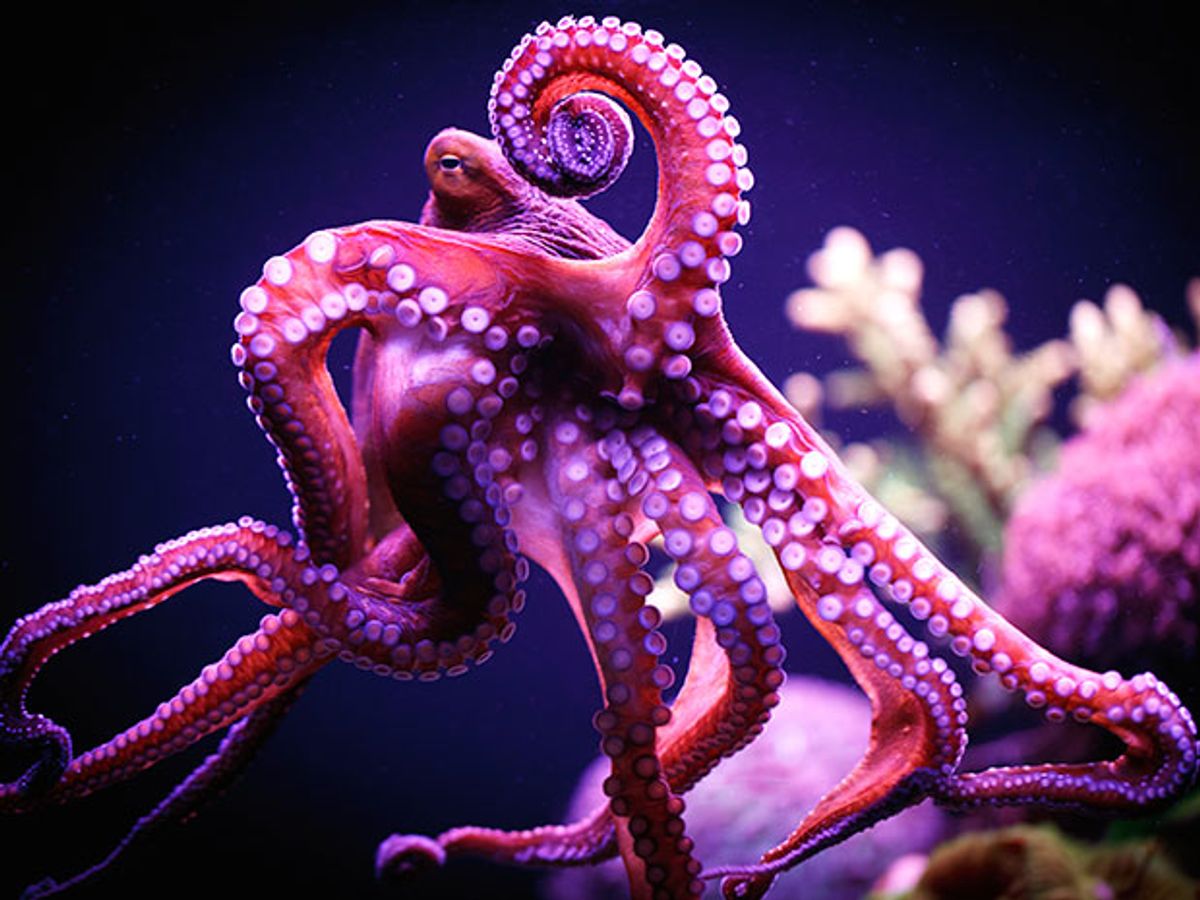Octopuses are widely admired for their intelligence, their skill as escape artists, and their extraordinary ability to camouflage themselves. Materials scientists are also taken by the adhesive properties of their tentacles. By controlling the pressure in their suckers, the cephalopods can rapidly grab onto and then release themselves from just about any surface they come across as they make their way along the ocean floor.
Now researchers led by materials scientist Hyunhyub Ko at the Ulsan National Institute of Science and Technology (UNIST) in South Korea have made octopus-inspired adhesives. Described online in Advanced Materials, the adhesives can be used in the transfer printing of nanomaterials to make flexible electronics and compound-semiconductor devices on silicon: adhesive pads can pick-and-place a broad range of nanomaterials, including as indium gallium arsenide nanoribbons, and place them on a wafer or flexible substrate.
Nature has long offered many examples of adhesives that put chemical engineers to shame—including tree-frog toes and the gecko’s foot. Attempts to mimic them have yielded flurries of research papers. But in just about every case, engineers have trouble matching the natural adhesives’ high on/off strength ratio, says Ko, who came into this area through his work on electronic skin.
Flexible pressure sensors, circiuts, and other electronics might give future prosthetics and robots a better sense of touch. But they can be a pain to build. Making such flexible electronics involves a lot of laborious transferring of nano- and microribbons of inorganic semiconductor materials onto polymer or rubber sheets. In search of an easier way to do this transfer printing, Ko turned to the octopus for inspiration.
Each of the animal’s suckers contains a cavity whose pressure is controlled by surrounding muscles. When one set of muscles contracts, the wall of the sucker thins. This increases the volume of the cavity, reducing the pressure in the sucker relative to the surroundings and creating suction. When it's time to let go, other muscles contract to thicken the wall, increasing the pressure and releasing the sucker.

To mimic this approach, Ko made an array of microscale “suckers” using the rubbery material PDMS. Sheets of PDMS riddled with pores are coated with a thermally responsive polymer to create sucker-like walls. At ambient temperatures, the polymer is hydrophilic, swollen up with water. When a pad of the material is heated to 32 degrees Celsius, the polymer undergoes a phase transition, becoming hydrophobic. It shrinks dramatically, creating suction. The adhesive strength spikes from .32 kilopascals to 94 kilopascals at high temperature.
“This temperature control makes it very easy to transfer semiconductor nanoribbons,” says Ko. “We can transfer any nanomaterial to any substrate.” (Transfer printing is pretty much the only way to get high quality, inorganic semiconducting materials like silicon or gallium arsenide onto flexible or stretchy substrates. Typically, matching the material, the stamp, and the substrate can be tricky.)
So far Ko has used this universal smart adhesive to make indium gallium arsenide transistors on a silicon dioxide substrate. They’ve also transferred nanomaterials to flexible polymers. And they’ve made stacks of crossed silicon ribbons, and silicon criss-crossed on compound semiconductor ribbons—something that’s quite laborious to do with traditional adhesive stamps, which adhere weakly using van der Waals forces.
Ko says these adhesives could also be used as the substrate for wearable health sensors, eliminating the need for any extra glues. The adhesive is very sticky at body temperature, 37 degrees; it could be removed by rinsing under cold water—with no painful band-aid tear.
Katherine Bourzac is a freelance journalist based in San Francisco, Calif. She writes about materials science, nanotechnology, energy, computing, and medicine—and about how all these fields overlap. Bourzac is a contributing editor at Technology Review and a contributor at Chemical & Engineering News; her work can also be found in Nature and Scientific American. She serves on the board of the Northern California chapter of the Society of Professional Journalists.



